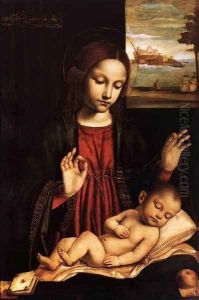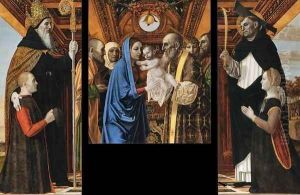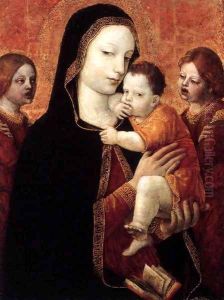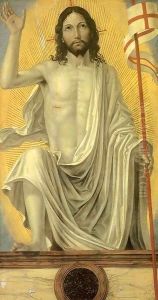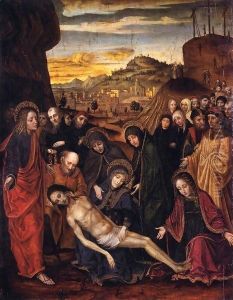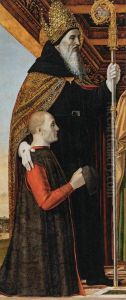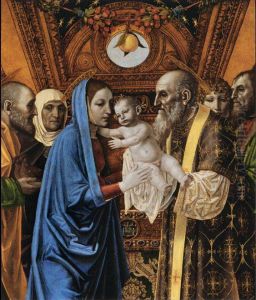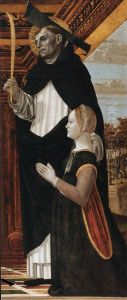Ambrogio Bergognone Paintings
Ambrogio Bergognone, whose real name was Ambrogio di Stefano da Fossano, was an Italian painter of the early Renaissance, belonging to the Lombard school. Born around 1453, likely in Fossano, a small town in the Piedmont region of Italy, Bergognone is regarded as one of the most significant artists of his time in Northern Italy, particularly within the Milanese school. His career flourished in a period marked by the transition from the Gothic style to the Renaissance, and his works are noted for their serene piety and clarity.
Bergognone's artistic journey was profoundly influenced by the political and cultural environment of Milan under the Sforza dynasty. The Sforza rulers were notable patrons of the arts, and their court attracted artists, writers, and scholars, fostering an environment ripe for artistic innovation and exchange. This milieu significantly impacted Bergognone's style, which evolved to incorporate the spatial and humanist innovations characteristic of the early Renaissance. Despite this, his work retained a certain Gothic sensibility in its grace and decorative elements, making his style distinct within the Lombard school.
He is best known for his religious works, primarily frescoes and altarpieces, which can be found in many of Milan's churches and in the Certosa di Pavia, a monastery near Milan that houses one of his masterpieces, the altarpiece of the Virgin Mary with Saints and Angels. This work, characterized by its detailed landscapes and ethereal figures, reflects Bergognone's mastery in blending narrative with spirituality, a hallmark of his oeuvre.
Throughout his career, Bergognone remained focused on spiritual themes, his works often imbued with a sense of divine tranquility and a deep reverence for the sacred. His ability to convey emotion through the serene expressions of his figures and the harmonious use of color distinguished him from his contemporaries. Despite his contributions to the Lombard school and the Italian Renaissance, Bergognone has not always received the same level of scholarly attention as some of his peers, though in recent years, there has been a renewed interest in his work and its significance in the context of 15th-century Italian art.
Ambrogio Bergognone's death in 1523 marked the end of a prolific career that spanned over seven decades. His legacy, encapsulated in the serene beauty and devoutness of his paintings, continues to be appreciated for its contribution to the development of Renaissance art in Northern Italy.
